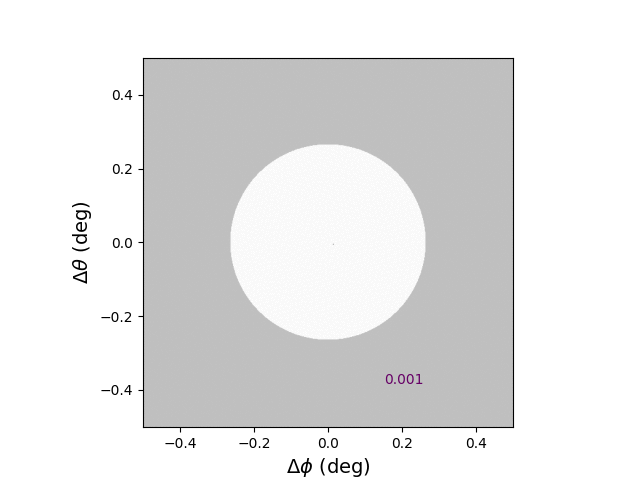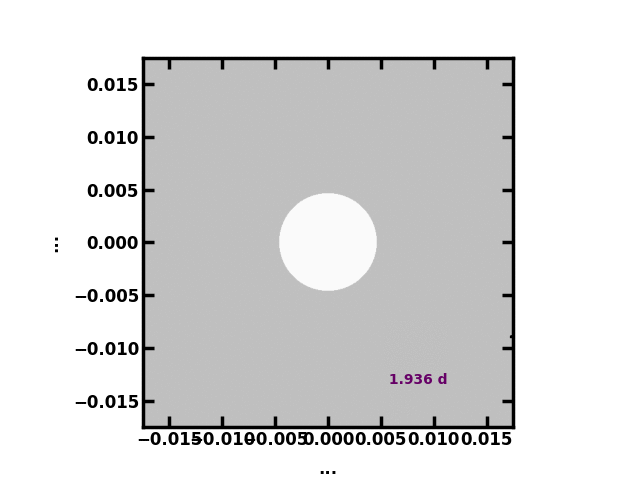In the desperate quest to find a way to avoid cooking the planet, scientists have run the numbers on using dust as a sunshade. They found it might just work, but only if the dust came from the Moon.
The idea of blocking sunlight to offset the effects of human activity on the global climate has been around almost as long as awareness of the dangers those effects pose. Most assessments have found the idea prohibitively expensive, or at risk of dangerous side effects.
In a new paper, scientists provide a fresh tweak to the idea by exploring how a large quantity of dust at Lagrange Point 1 (L1) would affect the Earth’s thermal balance.
Like L2, where JWST is located, L1 is a point where the gravitational fields of the Earth, Sun and Moon are in equilibrium, allowing objects to stay there for extended periods. Various imperfections mean dust at L1 won’t last indefinitely, but it could last for several days.
Previous proposals have usually considered placing some sort of parasol made out of very thin artificial material at L1, but observations of other star systems have demonstrated how effective dust can be as an astronomical dimming device.
Unfortunately, even with the falling price of rocket launches, sending the 10 million tonnes of dust annually required to reduce sunlight by 1.8 percent remains immensely costly. The authors calculate it would require the equivalent of 20,000 Saturn V launches. If only we had a source of dust that wasn’t located at the bottom of such a deep gravity well.
In fact, we have many. Asteroids might work, but are seldom conveniently close to L1. The Moon, on the other hand, is nearby and, as the Apollo missions revealed, very dusty. In addition to its much lower gravity, the lack of an atmosphere means launches from the lunar surface don’t need to worry about weighty heat shields.

The dust launched from the Moon wouldn’t block the entire Sun, but it only needs to stop 1.8 percent of sunlight. Image credit: Ben Bromley
Conveniently, the most common size for lunar dust particles is around 0.2 micrometers, the size the authors find provides the best balance of shading for weight and staying power at the desired location.
“It is amazing to contemplate how moon dust – which took over four billion years to generate – might help slow the rise in the Earth’s temperature, a problem that took us less than 300 years to produce,” said Dr Scott Kenyon of the Harvard and Smithsonian Center for Astrophysics in a statement.
The authors’ expertise lies in planet formation, making them highly familiar with dusty astronomical environments. They realized: “if we took a small amount of material and put it on a special orbit between the Earth and the Sun and broke it up, we could block out a lot of sunlight with a little amount of mass,” Professor Ben Bromley of the University of Utah said.

A simulation of dust launched from the moon’s surface as seen from Earth. Image credit: Ben Bromley
The paper acknowledges considerable uncertainties. Along with gravitational forces, the dust is affected by the pressure of sunlight and the solar wind. The latter varies with events such as coronal mass ejections, making it impossible to predict precisely how long shading would last.
“It was rather difficult to get the shield to stay at L1 long enough to cast a meaningful shadow. This shouldn’t come as a surprise, though, since L1 is an unstable equilibrium point,” said University of Utah undergraduate student Sameer Khan. “Even the slightest deviation in the sunshield’s orbit can cause it to rapidly drift out of place, so our simulations had to be extremely precise.”
However, the team concluded a stream of dust shot off the lunar surface towards L1 would work without being permanent enough to create a Snowpiercer-style Ice Age.
Building a machine on the Moon capable of digging up, sorting, and launching the dust would be expensive, but the force required is a small fraction of what it would take from Earth. Moreover, the volume of dust required is on the scale of what is displaced by some of the larger mines on Earth, so we wouldn’t need to despoil most of our companion.
The authors are not claiming they have found the solution to a problem they call “existential”. Bromley said, “We aren’t experts in climate change, or the rocket science needed to move mass from one place to the other.” They do, however, hope that by using the skills they have, they will get others with relevant knowledge to join the discussion.
The paper is published open access in PLOS Climate.
Source Link: Scientists Investigate Whether Moondust Could Save The Earth From Global Warming